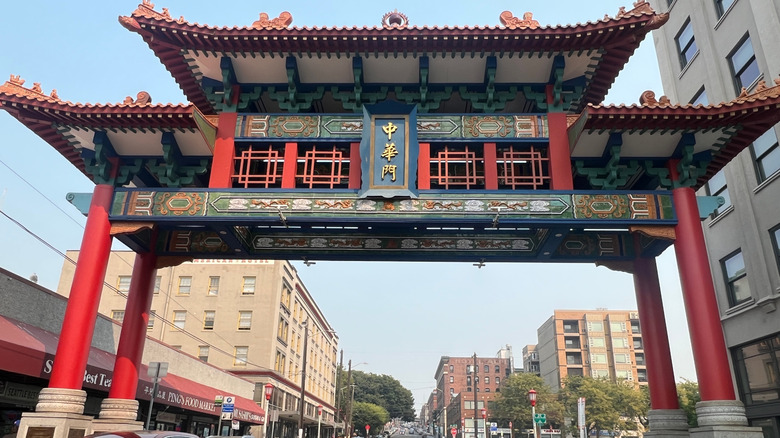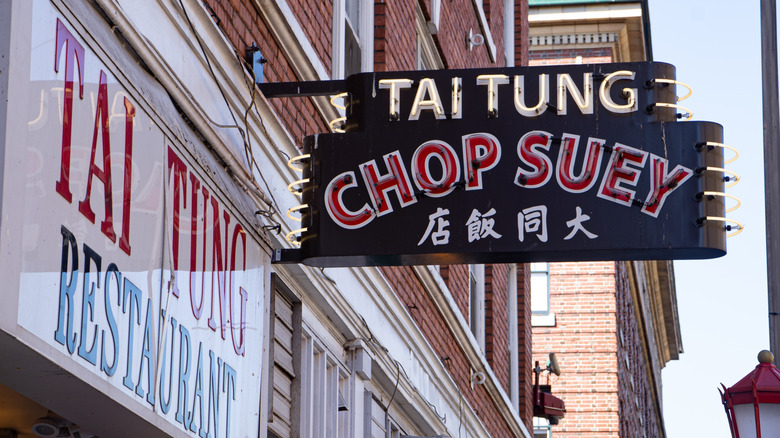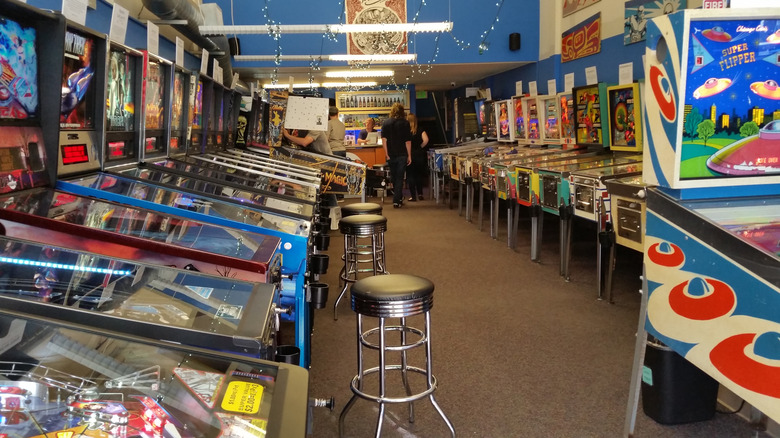One Of The Most Diverse Chinatowns In All Of America Thrives In This Flavorful Pacific Northwest Paradise
Chinatown may be part of its name, but in Seattle, there's far more to Chinatown-International District than an ornate, dragon-bedecked gate and a few places to grab dumplings. One of the Pacific Northwest's most vibrant cities is also one of its most diverse. Whether you're heading to the eccentric eateries in artsy Fremont or watching the fishmongers at Pike Place Market toss their wares, food obsessives will find much to excite them in the Emerald City.
For many travelers, the quality of a food city can be weighed by its Asian neighborhoods. Seattle's first Chinatown was founded in the late 1800s but was moved from its original home to the area that it occupies now, in the city's center. By the dawn of the 20th century, the neighborhood was already expanding both its borders and its scope to include immigrants from Japan. Today, that district is known as Japantown, later joined by Little Saigon as refugees came to America amid the Vietnam War. Today, visitors will find a diverse mix of Filipino, Thai, and Korean cultures, too.
The Wing Luke Museum, named for the first Asian American to serve in public office in Seattle, is the ideal place to learn more about the history of the district. At the 60,000-square-foot, Smithsonian-affiliated space, guests will learn about the background of the neighborhood, as well as stories of its Pan-Asian inhabitants. The museum also hosts walking tours of Chinatown-International District each Saturday. The themes include everything from food to the life of the area's most famous son, movie star Bruce Lee.
Taste history in Seattle's Chinatown-International District
The Panama Hotel, which opened in 1910, is still operational as both a lodge and a teahouse, serving as a window into Seattle's Japanese American history. With more than 40 varieties of tea and a menu of sweet Japanese wagashi, it's a great home base for a visit to the neighborhood. In spring, check out the cherry blossoms that fill nearby Kobe Terrace park.
Maneki opened in 1904, making it the first restaurant in Seattle (and one of the first in the United States) to serve sushi. For a more modern experience, try gastropub Itsumono, where unusual fusion dishes range from cheesesteak sliders made with Mishima wagyu to an Indian-spiced tikka tonkatsudon. A few blocks away, Chinatown features even more excellent dining options, including Bruce Lee favorite Tai Tung, which opened in 1935. Specialties lean Chinese American, with dishes like sweet-and-sour pork and beef chow fun. For something newer, try one of the fiery Sichuan restaurants that have exploded in the area, including Chengdu Taste, Szechuan Fish, and ZSX Szechuan Rice Noodle.
A relatively recent addition, Little Saigon, is packed with delis and banh mi shops that make it easy to get a quick bite. The standout among these is Saigon Deli, where sandwiches are still mostly less than $6. To commemorate the Filipino community that once filled the neighborhood, try Hood Famous Café + Bar, where Filipino breakfast bowls are best enjoyed with a round of pandan cheesecake.
Have fun around Chinatown-International District
Locals know Hing Hay Park as a place to move your body. You'll likely see someone meditating or shadow boxing in the martial art of their choice, but for those of us who are less enlightened, there's outdoor exercise equipment with a barrier for privacy. The park's name means "Celebrate Happiness Public Park," an apt title for the location of the neighborhood's annual Dragon Fest and Lunar New Year parties.
After shopping at Kobo Seattle, inside what was once the historic Higo Variety Store, bring your bag filled with Asian-inspired art, jewelry, and home goods with you to the Seattle Pinball Museum. Though pinball was invented in the West, the museum found a home in Chinatown-International District in 2010. The museum is an interactive affair, with more than 50 machines offered for as long as you can keep the ball in play (or all day) for one fee of around $20, as of this writing. The machines go back as far as 1960's "Texan," but also include brand new, high-tech games.
On your way out of Chinatown-International District, stop at Uwajimaya. The grocery store has been located in Washington for almost 100 years. Take home a Gashapon capsule toy or two and scoop up some Royce' chocolate, an ultra-luxe brand from Hokkaido that's priced accordingly. All this conspires to make Seattle's Chinatown-International District one of the best Chinatowns across America.


